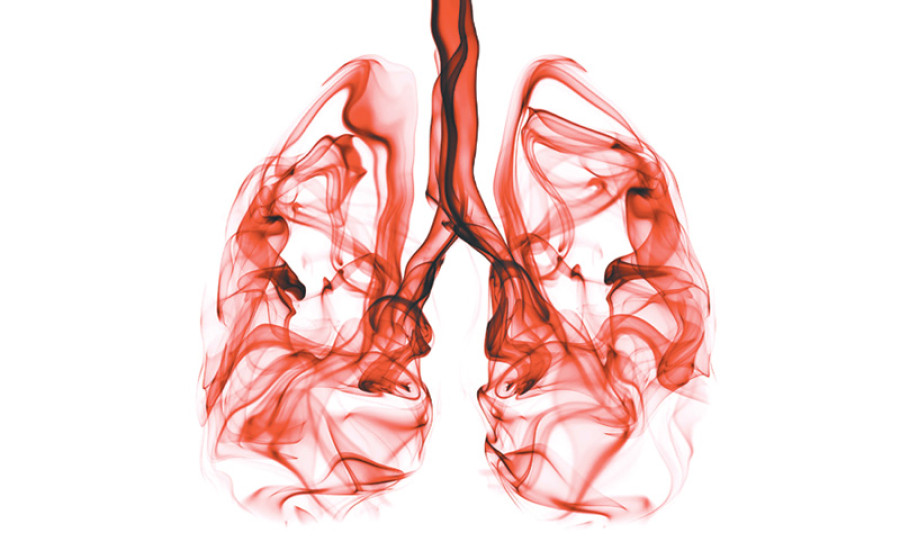Opinion
Death breath
November 16 is observed internationally as the World Chronic Obstructive Pulmonary Disease (COPD) Day.
November 16 is observed internationally as the World Chronic Obstructive Pulmonary Disease (COPD) Day. It aims to raise public awareness about the disease. COPD is a non-communicable disease (NCD), which is increasing in number by the day and is projected to be the leading cause of death by the year 2020. Globally, 10 to 20 percent of the populations older than 40 years are COPD sufferers. Recent studies have shown that COPD is the most common NCD in Nepal, followed by cardiovascular diseases, diabetes and cancer. Despite growing recognition as an important international health problem, COPD has suffered neglect in Nepal till date.
Fatal disease
COPD is a chronic inflammatory lung disease characterised by cough, sputum production and shortness of breath. It includes two entities, namely chronic bronchitis, characterised initially by early morning cough and sputum production; and emphysema characterised by progressive difficulty in breathing. Worldwide, the most commonly encountered risk factor for COPD is tobacco smoking, followed by air pollution. However, non-smokers may also develop COPD; for example, priests exposed to smoke from burning incense may develop it. However, the bulk of the COPD cases are due to a smoking habit.
Smoking has been popular in Nepal for long. Tobacco is smoked in various forms including bidis, cigarettes and hukkas. There is a significant number of female smokers; even some very young people smoke. In a landmark study from Nepal, published in an international journal in 1984, smoking was higher among females than males, and the onset age is very low. In our clinical practice, we get as many female patients as males, and the onset of the disease is at around 35 to 40 years.
Patients suffering from COPD start showing symptoms after years of smoking and complain of cough and sputum production, which initially are marked during winter months. Gradually, breathing becomes more and more difficult and they seek medical attention. But by this time their lung function will have been damaged irreversibly. They need medications to relieve their symptoms. This disease causes damage and narrowing of the airways and it eventually leads to respiratory failure. Moreover, it causes enlargement of the right heart, a condition known as ‘Cor-pulmonale’. When this happens, the prognosis is very poor and the person needs continuous oxygen for survival.
Thus, COPD leads to a loss of quality of life. The treatment is life-long and includes regular medications along with continuous oxygen therapy. Hence it also puts greater economic burden on the family and the society as a whole. As such, preventing this fatal disease is a worthwhile goal.
Five measures
As clinicians, we talk to our patients and their family about the five measures to prevent COPD and to keep their lungs healthy. First and foremost, stop smoking from today. If it is difficult, we will help you. There are ways and medications to quit smoking. Second, avoid second-hand smoke. According to the WHO, 10 percent of smoking-related deaths are due to second-hand smoke. Third, avoid air pollution: smoke from unventilated wood stoves and from burning biomass fuel predisposes people to COPD. Fourth, avoid occupations that expose you to dust, such as working in brick kilns. If that is not possible, use protective masks. Fifth, know your family history: a genetic disease may predispose a person to the development of COPD at a very early age.
If such preventive measures are adopted, the burden of this disease can be reduced, if not eliminated. But it is obvious that this disease cannot be controlled by clinicians alone. It should be addressed at the family, community and national levels. We can no longer pretend that the statutory warnings in tobacco packages are enough to discourage people from smoking. We cannot assume that diseases due to air pollution and occupational hazards do not exist in our country. Controlling the tobacco industry, creating awareness among people, adopting measures to monitor and fight pollution and monitoring occupational dust exposure should be the government’s priority for the prevention of lung diseases, including COPD.
Every hospital in the country should have a public health education cell actively involved in creating awareness about COPD. Maybe the government should start a reward system for quitting smoking and reporting occupational dust exposure. Perhaps it can even ban smoking in the country and set an example for others to follow.
On this International day for COPD, let us all play a role by talking about this disease and taking a positive step towards its prevention.
Neopane is Respiratory Physician at Kathmandu Medical College, Sinamangal




 21.35°C Kathmandu
21.35°C Kathmandu









